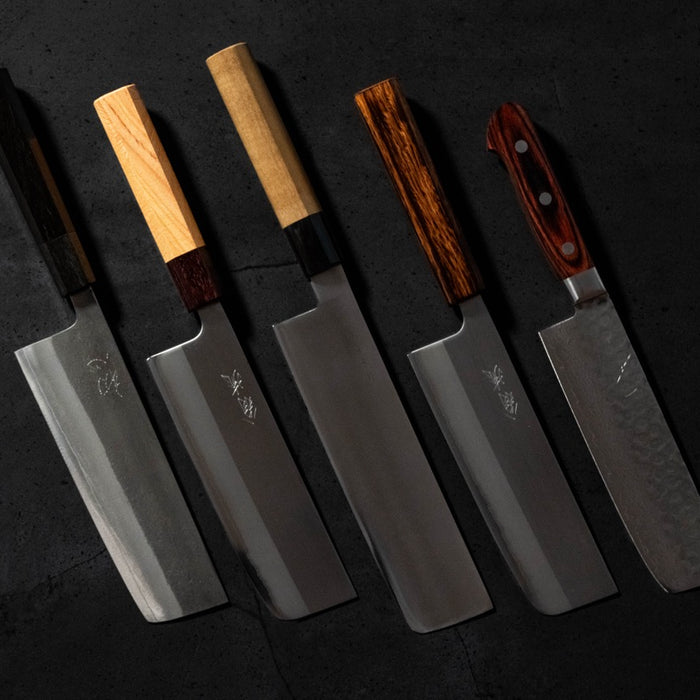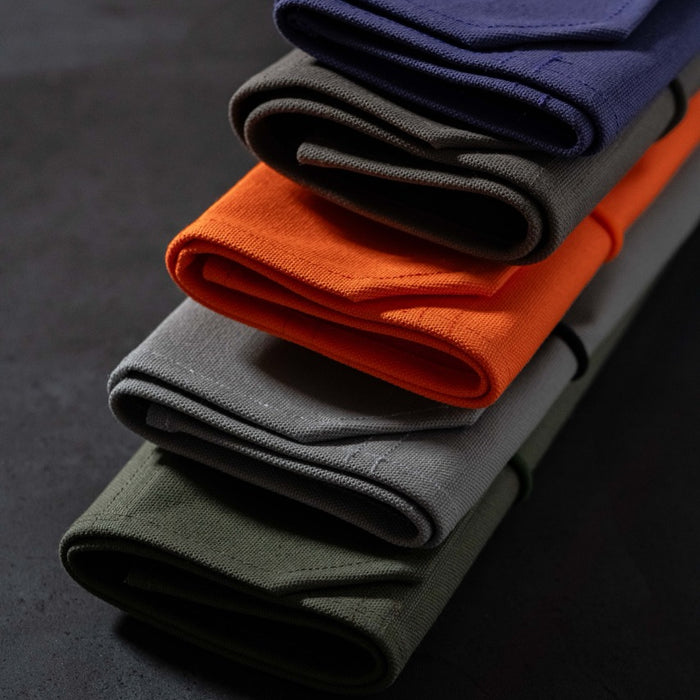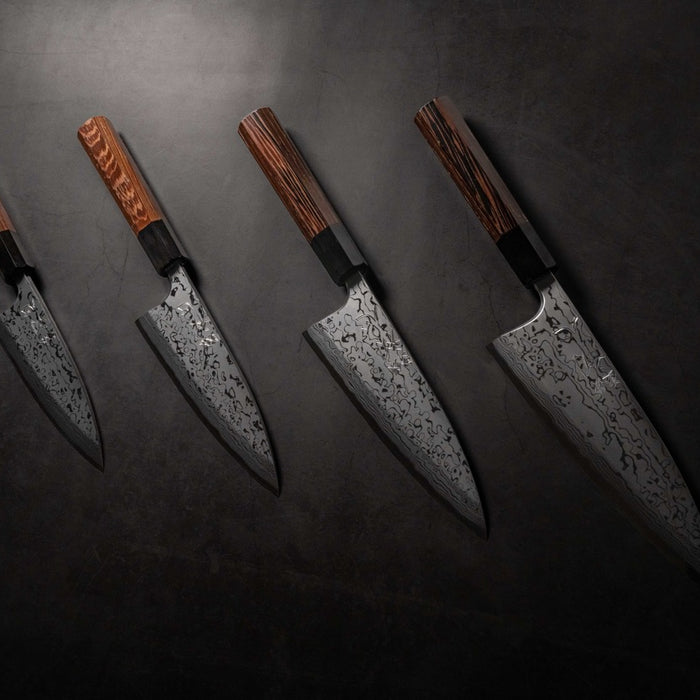

Natural Japanese Stones
First, the world of Jnats (Japanese Natural Stone) is huge and I do not consider myself an expert in the field. However, having been an active user of these stones for several years, I would like to present my views on this subject and show you the benefits of using them.
Why use natural stones?
The sharpening particles of natural stones are of unequal size, which is not the case of synthetic stones. This inequality leads to a greater longevity of the contact surface. So you won’t need to flatten your natural stones as much as the synthetics. Natural stones will also manage to get a sharper edge faster.
A good-sized natural stone will last a lifetime and even more! Natural stones eliminate smudges more easily than synthetic stones, so the knife edge becomes much purer and will last much longer. Natural stones will create a better kasumi finish much more easily than synthetic stones. You can really feel a difference in performance when a knife is sharpened on natural stones.
How to select the stones?
In general, soft natural stones are more useful for kitchen knives and require less dexterity than hard stones. So it’s best to start with softer stones and get harder stones as your skills improve. Some very hard and thin stones can scratch the soft iron (jigane), but will not scratch the hard steel (hagane). This is not due to the poor quality of the stone, but because steel is softer than the stone itself. So you should use them carefully and only with mud and light pressure. Hard and thin stones are usually the rarest and most expensive stones. These stones are more effective for sharpening tools and razors, but less so for kitchen knives.
I won’t be explaining all the different stones that can be found in each mine, but here are a few.
- Nakayama 中山
- Mizukihara 水木原
- Oohira 大平
- Okudo 奥殿
- Shoubudani 菖蒲谷
- Oozuku突
- Shinden 新田
- Kouzaki前
- Hideriyama照
- Atagoyama 愛宕
- Yaginoshima 八ノ嶋
- Hakka 八箇
- Sororo Ozaki崎
- Okunomon 奥ノ門
- Otoyama 音羽
- Takashima島
- Yaginoshima 八嶋
- Kizuyama津
- Saeki 佐伯
- Kinugasayama 衣笠

Many popular stones, such as Uchigomori, have a reputation for being more effective than other less recognized stones. For example, you can get much better results with a very thin Nakayama or a super hard Ozuku, than with a Uchigomori, but it will take longer.
The Uchigomoris come only from the mines of Ohira or Mizukihara. They are known for their super soft particles that will not scratch the steel. They are not as thin as some people may think, the Tamahagane being a fairly soft steel, it cannot withstand a fine polishing. This steel will be scratched when harder stones are used. As Uchigumoris are very slow stones, they should not be used for sharpening. They should only be used for polishing and to contrast the soaked “steel clouds” with the Hamon.
I think many Jnats fanatics tend to look at Japanese polishing stones from one point of view instead of considering each stone as entirely unique; each with its own set of multifaceted qualities. I have noticed that many people consider that only ancient or rare stones are worth buying, because these people consider that these stones have the best sharpening qualities. This false claim is usually associated with the idea that new stones are of a lower overall quality than stones sold previously. In short, don’t necessarily rely on the age of a stone to make your selection.
Why are hard stones reserved for experienced users?
The harder the stone, the more difficult it is to extract mud from it. Mud does all the polishing work. If you don’t get mud from your stone, there will be no result. On the other hand, hard stones are among the best. In order to get the most out of a hard stone, you must have some knowledge of how the Jnats work. You have to understand the decomposition of the mud and the polishing characteristics. For this to happen, you have to start with a slightly softer stone and, when you learn how to use it properly, you can switch to a harder razor-quality stone and discover the best cutting edge that exists.
The biggest problem for new users of hard Japanese stones is that they don’t do enough pre-polishing. Many claim that their hard stones are no thinner than their semi-hard stones. But the fact is that the Jnats are very hard and extremely fine. During the first passes, if the grinding has not been done correctly, the stone will reveal scratches on the blade made by the other coarser stones used previously. This may leave a mirror finish to the blade if you don’t use sharpening mud. This mirror finish reflects all the scratches left by the other stones. When using a hard-finishing stone in this way, you might think that the stone is not thin, when in fact you have not spent enough time pre-polishing your blade.
So the best advice I can give to a new user of natural stones is to start with a soft stone. To help you make your choice, scales of hardness, fine grain and sharpening speed will always be present in the stone’s description sheet.
Hardness scale
From 1 to 5, 1 represents a very soft stone and 5 represents a very hard stone. I recommend a maximum hardness of 3 to begin with.
Grain scale
From 1 to 5, 1 represents a stone with a thin grain and 5 represents a stone with a very fine grain. Obviously, a very high grain will make your cutting edge sharper.
Speed scale
From 1 to 5, 1 represents a very slow stone and 5 represents a very fast stone. Generally speaking, speed is a fairly important criteria: the faster the stone, the less likely you are to make mistakes.
The most important thing is to never soak your Jnats! Under any circumstances!
Our selections of Jnats are mainly optimized for kitchen knives.


